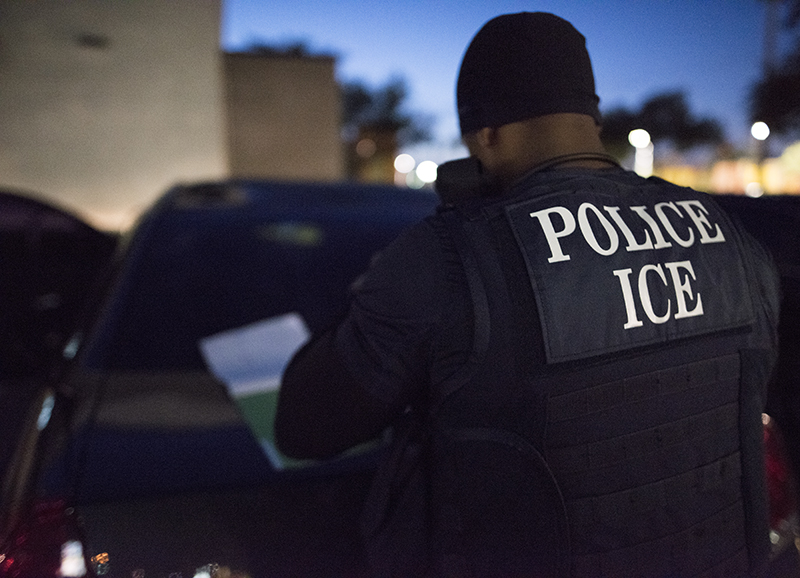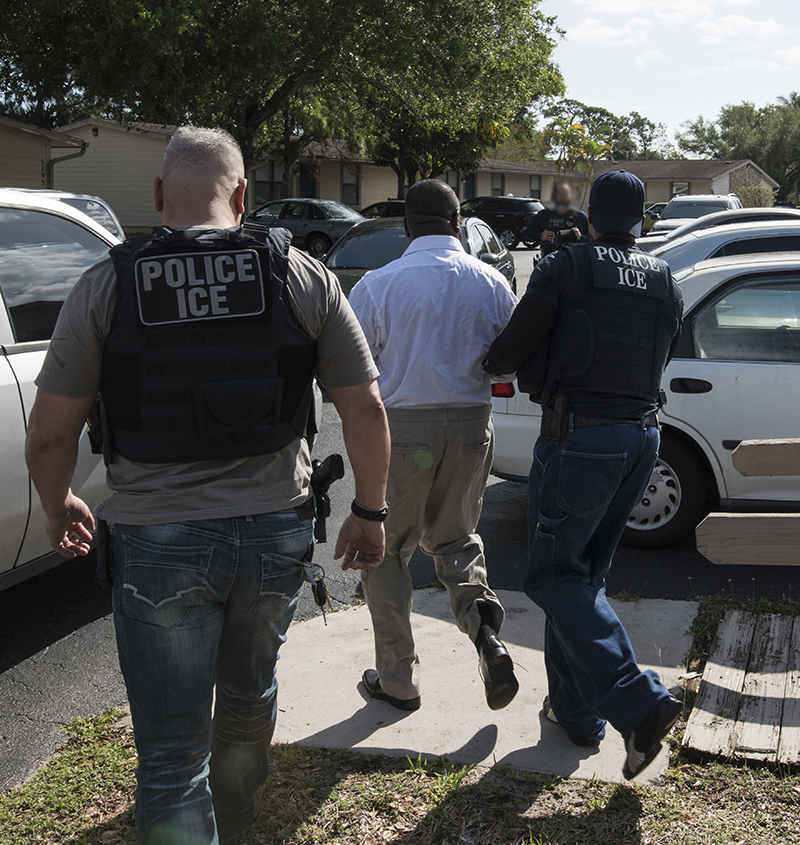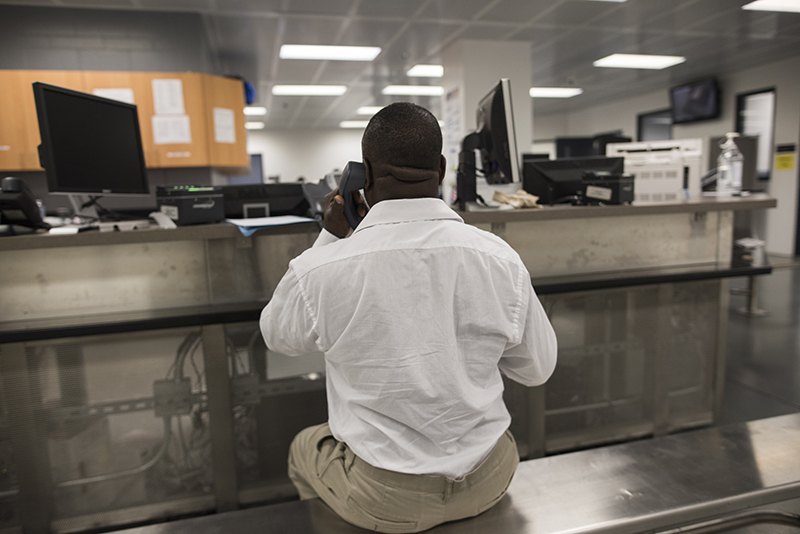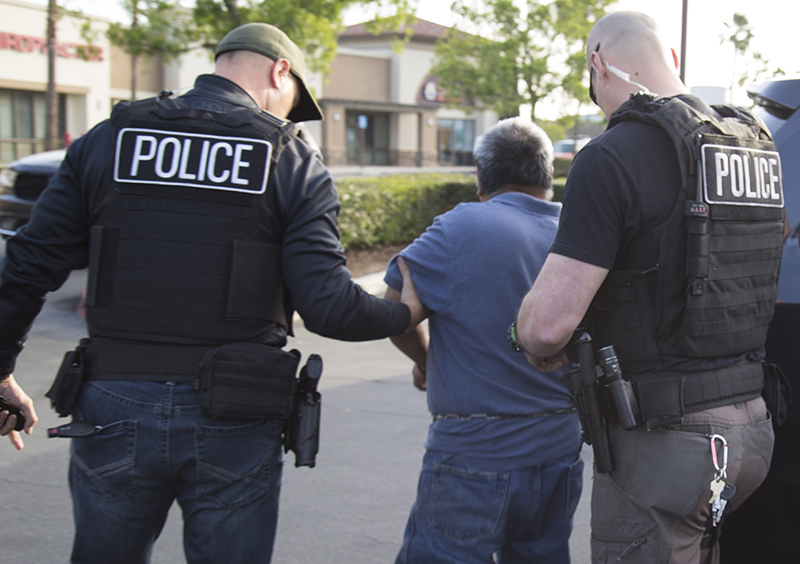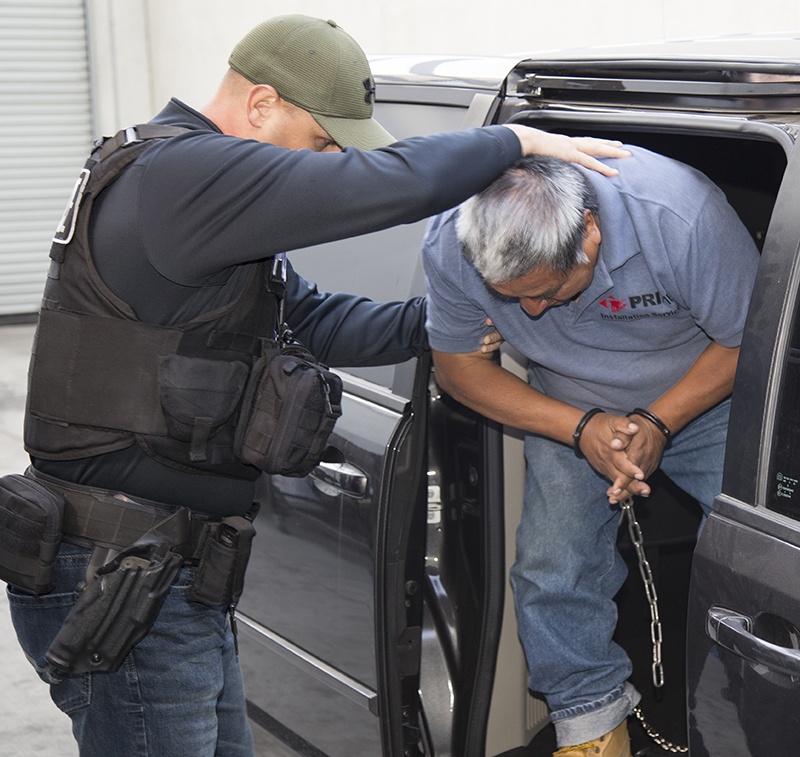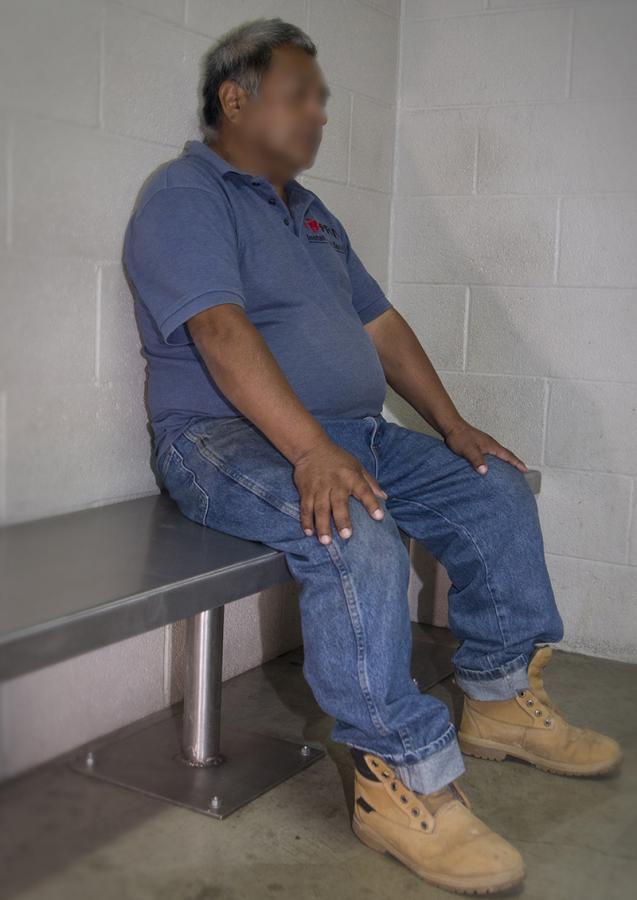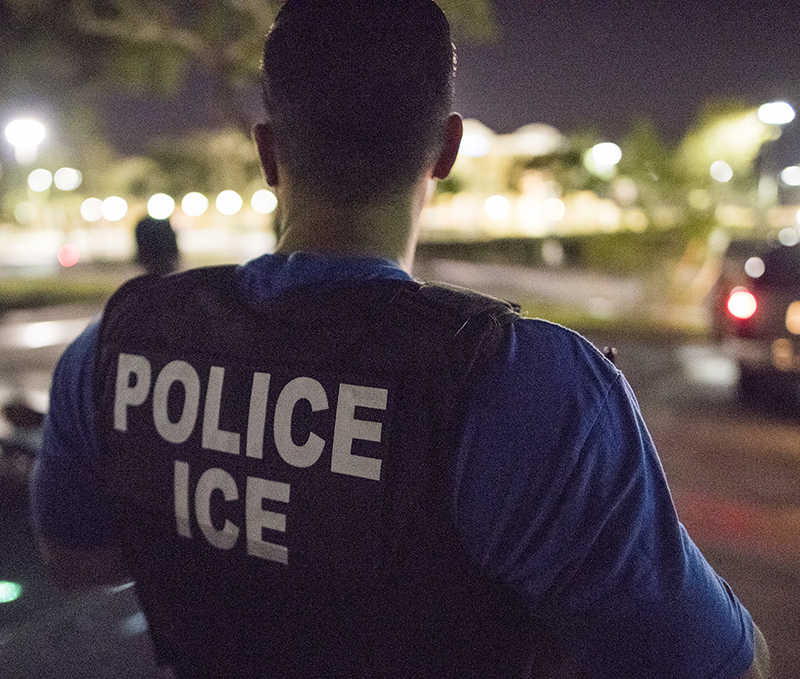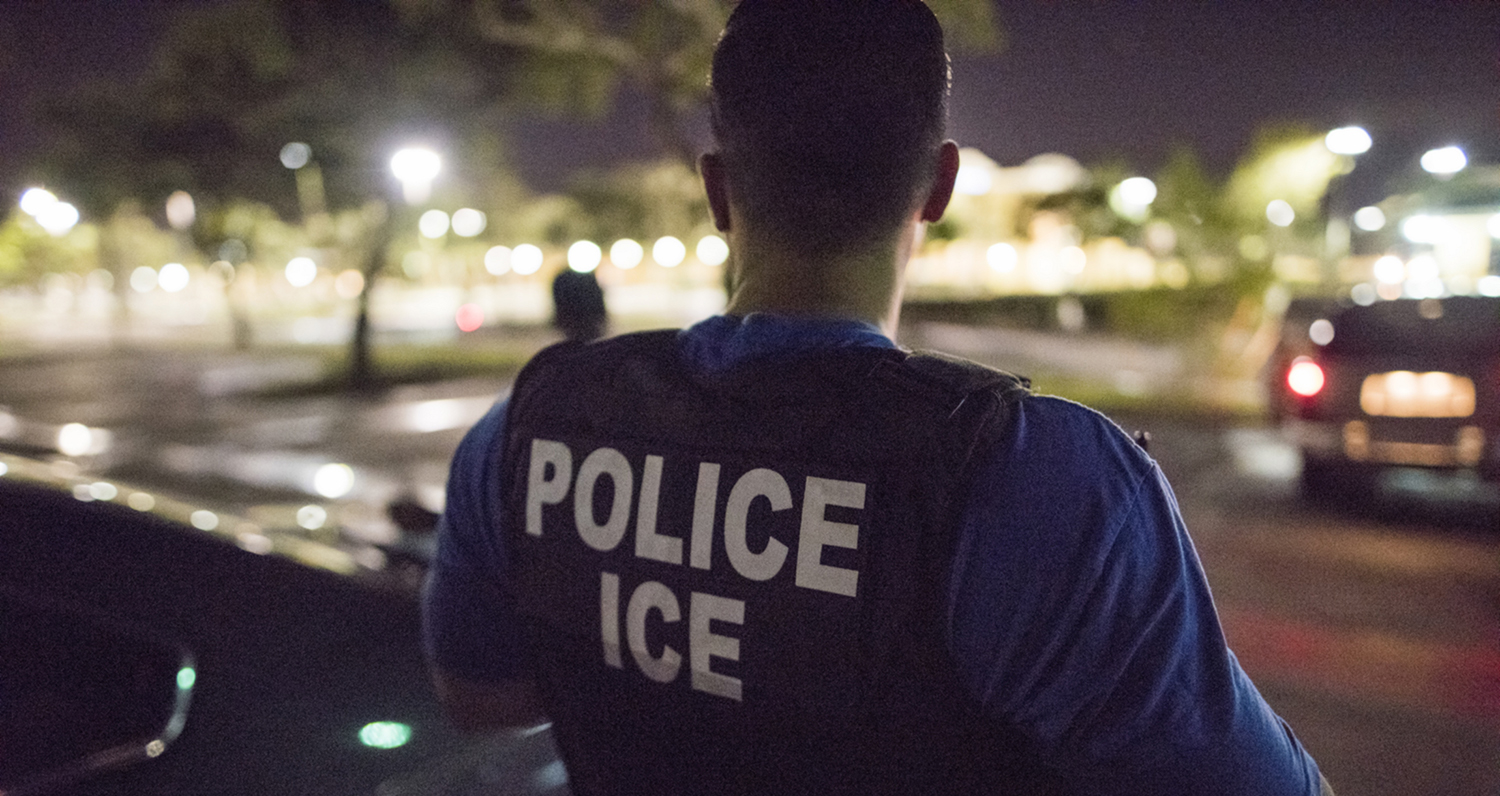
ICE arrests 39 suspected human rights violators across the US during Operation No Safe Haven V
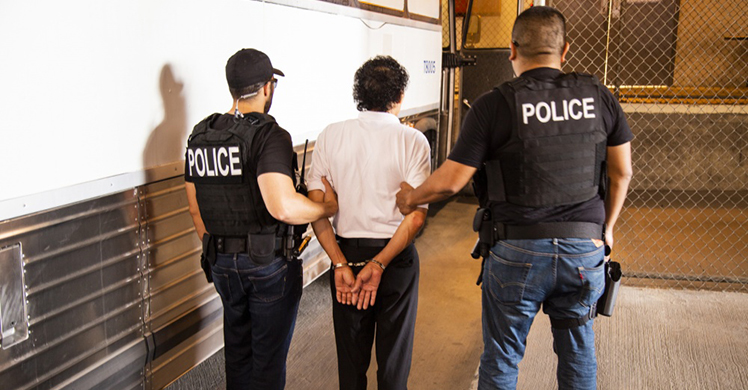
U.S. Immigration and Customs Enforcement (ICE) arrested 39 fugitives – 30 males and nine females – sought for their roles in known or suspected human rights violations during a nationwide operation that took place from Aug. 27 to 29.
The ICE National Fugitive Operations Program in coordination with the ICE Human Rights Violators and War Crimes Center, and the ICE Office of the Principal Legal Advisor, worked with ICE’s Enforcement and Removal (ERO) Atlanta, Baltimore, Chicago, Dallas, Houston, Los Angeles, Miami, New Orleans, New York City, Newark, Salt Lake City, and San Francisco field offices to arrest these fugitives.
The foreign nationals arrested during this operation all have outstanding removal orders and are subject to repatriation to their countries of origin. Of the 39 known or suspected human rights violators arrested during Operation No Safe Haven V, 16 individuals are also criminal aliens in the U.S. with convictions for crimes including, but not limited to, domestic violence, driving under the influence of liquor, drug distribution, firearm possession, grand theft, reckless endangerment, robbery, fraud and theft. Their countries of origin include: El Salvador, Guatemala, China, Liberia, Cambodia, Chad, Chile, Colombia, the Ivory Coast, Ghana, Haiti, Honduras, Jamaica, Nicaragua, Sierra Leone, and Sudan. This operation more than doubled the number of known or suspected human rights violators arrested during the first nationwide No Safe Haven operation, which took place in September 2014.
Those arrested across the country included:
- Fourteen individuals from Central America implicated in numerous human rights violations against civilians, to include the capture, arrest and/or transport of civilians who were subsequently mistreated, and in some cases, beaten, electrocuted, and killed;
- Four known or suspected human rights violators from China, complicit in collaborating with the government to assist in forced abortions and sterilizations against victims;
- Four individuals from West Africa connected to a range of atrocities, including civilian massacres, mutilations, recruitment of child soldiers, extrajudicial killings, and other human rights violations.
- An individual from Europe implicated in human rights abuses against political opponents through work with a security agency.
ICE credits the success of this operation to the efforts of the U.S. National Central Bureau-Interpol Washington.
Note: The arrest statistics provided in this news release represent preliminary data that has been manually reported by ICE Field Offices, and may vary from official agency metrics contained in ICE’s system of record. Because ICE’s official metrics are reported by Area of Responsibility (AOR), they may differ in content and level of detail from data that has been manually reported by a Field Office.
ICE Case Files: How Operation No Safe Haven started
The first No Safe Haven operation took place in 2014, with the purpose of finding, arresting, prosecuting and removing human rights violators.
In September 2014, ICE arrested 19 fugitives for their roles in known or suspected human rights violations in multiple cities across the United States. The crimes perpetrated displayed a lack of regard for human life, including murder and war crimes.
Operation No Safe Haven was born.
Three components of ICE worked in tandem to make it happen: Enforcement and Removal Operations (ERO) National Fugitive Operations Program, the Office of the Principal Legal Advisor Human Rights Law Section and Homeland Security Investigations (HSI) Human Rights Violators and War Crimes Unit.
David Collado, the national program manager for the Transnational Law Enforcement Operations Unit in ERO, believes the first-of-its-kind operation for ICE provided a way for the agency to comprehensively target human rights violators.
“Initially, ICE’s Human Rights Violators and War Crimes Center and the Office of the Principal Legal Advisor were discussing a better way to target human rights violators illegally present in the United States,” said Collado. “They brought us in and decided to do a comprehensive operation, instead of working cases individually.”
The skillsets of ERO deportation officers, HSI special agents and ICE attorneys proved equally paramount to the success of Operation No Safe Haven. Each component’s work depended on the other.
“We worked with ERO to identify potential fugitives who were human rights violators,” said Mark Shaffer, unit chief, Human Rights Violators and War Crimes Center, HSI. “ERO’s fugitive operations groups did the legwork to identify target locations and then developed operational plans to locate and arrest them; those duties fell squarely within their purview. HSI agents are encouraged to fully participate in these operations in partnership with ERO and pursue independent investigations should additional criminal violations be identified.”
The operation yielded a case showcasing the nexus between a fugitive with persecutory indicia, an administrative removal order, and criminal charges. ICE arrested a fugitive from Central America; a target with a military and munitions background. During a search with consent, ICE uncovered a large cache of illegal weapons and hundreds of rounds of ammunition. Later indicted, the subject was ultimately convicted and removed from the U.S.
By working together, and with a proactive focus, ERO and the Human Rights Violators and War Crimes Center looked for ways to collect intelligence and seek out human rights violators currently at large in the United States. The team researched some 4,000 cases, and with the help of the ICE National Criminal Analysis and Targeting Center in Williston, Vermont, completed criminal and intelligence analysis from a variety of sources and prepared specific targets for Operation No Safe Haven.
Determining whether or not an individual falls into the category of human rights violator and who to prioritize as a target in the operation can prove difficult. Questions must be asked: has the person committed genocide or war crimes? Is there evidence of the person’s crimes in his country of origin? What other crimes has the person committed? Is there justification to put the person in custody?
The process continues to evolve until the operation commences. “We are constantly talking about specific cases and whittling down the list of targets right up to the start of the operation,” said Ajay Bhatt, an attorney with the Human Rights Law Section. “We take names off the list, add them back on, and refer to the data analysis throughout the process.”
As ERO takes the lead of the operation on the ground, ICE attorneys remain available to the deportation officers to assist with incident reporting and issues that arise regarding the arrests of subjects. “We try to anticipate legal issues with the courts,” said Bhatt, “and facilitate communication among our counterparts in the field.”
“The eventual success of the operation came from the collaborative working relationship among the ICE attorneys, officers and agents in the field and headquarter staff,” said Collado. “ICE management has been very supportive and believed in this work.”
Bhatt said he was proud to have contributed to the operation. “It has been a very positive collaboration among the ICE components with dynamic leadership and fluid thinkers,” he said.
Operation No Safe Haven IV (2018)
ICE arrests 33 with history of human rights violation across the US during Operation No Safe Haven IV
WASHINGTON — U.S. Immigration and Customs Enforcement (ICE) Enforcement and Removal Operations arrested 33 fugitives sought for their roles in known or suspected human rights violations during a nationwide operation this week.
During the three-day operation that concluded Wednesday, the ICE National Fugitive Operations Program in coordination with the ICE Human Rights Violators and War Crimes Center and the ICE National Criminal Analysis and Targeting Center (NCATC), arrested these fugitives via the ICE field offices of Atlanta; Baltimore; Boston; Chicago; Denver; Detroit; Houston; Los Angeles; Miami; New Orleans; New York City; Philadelphia; Phoenix; Seattle; San Francisco; and St. Paul, Minnesota.
The foreign nationals arrested during this operation all have outstanding removal orders and are subject to repatriation to their countries of origin. Of the 33 known or suspected human rights violators arrested during Operation No Safe Haven IV, eight individuals are also criminal aliens with convictions for crimes including, but not limited to battery, weapons offenses, driving while intoxicated, and resisting arrest. This operation surpassed the number of known or suspected human rights violators arrested during the first nationwide No Safe Haven operation, which took place in September 2014.
Those arrested across the country included:
- Four Chinese individuals — some of whom were hospital employees — who assisted in or directly conducted forced abortions and sterilizations upon victims in China;
- A former intelligence officer who surveilled and arrested dozens of targets subsequently tortured in Central America;
- A soldier in Central America who guided the military to a specific village for the purpose of killing its residents;
- A ranking intelligence officer from the Middle East whose surveillance information led to the arrest, torture, and murder of those his unit targeted;
- A group leader in East Africa who used violence to force victims into Female Genital Mutilation.
The NCATC provided critical investigative support for this operation, including criminal and intelligence analysis from a variety of sources. The NCATC provides comprehensive analytical support to aid the at-large enforcement efforts of all ICE components.
ICE credits the success of this operation to the combined efforts of the U.S. National Central Bureau-Interpol Washington, and U.S. Citizenship and Immigration Services.
About the Human Rights Violators and War Crimes Center
ICE is committed to identifying, investigating, prosecuting and removing known or suspected human rights violators who seek a safe haven in the United States. ICE's Human Rights Violators and War Crimes Center (HRVWCC) investigates human rights violators who try to evade justice by seeking shelter in the United States, including those who are known or suspected to have participated in persecution, war crimes, genocide, torture, extrajudicial killings, severe violations of religious freedom, female genital mutilation/cutting and the use or recruitment of child soldiers. These individuals may use fraudulent identities or falsified documents to enter the country in an attempt to blend into communities in the United States.
Members of the public who have information about foreign nationals suspected of engaging in human rights abuses or war crimes are urged to contact ICE by calling the toll-free ICE tip line at 1-866-347-2423 or internationally at 001-1802-872-6199. They can also email HRV.ICE@ice.dhs.gov or complete ICE’s online tip form.
The HRVWCC was established in 2009 to further ICE’s efforts to identify, locate and prosecute human rights abusers in the United States. The HRVWCC leverages the expertise of a select group of agents, lawyers, intelligence and research specialists, historians and analysts who direct the agency’s broader enforcement efforts against these offenders.
Since 2003, ICE has arrested more than 415 individuals for human rights-related violations of the law under various criminal and/or immigration statutes. During that same period, ICE obtained deportation orders against and physically removed more than 990 known or suspected human rights violators from the United States. Additionally, ICE has facilitated the departure of an additional 152 such individuals from the United States.
Currently, ICE has more than 170 active investigations into suspected human rights violators and is pursuing more than 1,600 leads and removals cases involving suspected human rights violators from 95 different countries. Since 2003, the HRVWCC has issued more than 75,000 lookouts for individuals from more than 110 countries and stopped over 300 human rights violators and war crimes suspects from entering the U.S.


